Some of the native North American Caterpillars look like sticks. They have this appearance to stay safe from predators.
Stick-shaped caterpillars may or may not take the color of the host tree or shrub as well.
Gray, brown, yellow, and even red colors may be specific to these types of caterpillars.
Many types of caterpillars in the shape of a stick are found in woodlands, particularly on deciduous trees.
They feed on the leaves of these trees.
A smaller percentage of these caterpillars also feed on fruits such as blueberries. These types of fruits are also specific to the open areas next to woodlands.
Caterpillars that look like sticks may also overwinter in a caterpillar stage. They start to become active in early spring in Southern states and late spring in Northern states.
Table of Contents
1. Peppered Moth
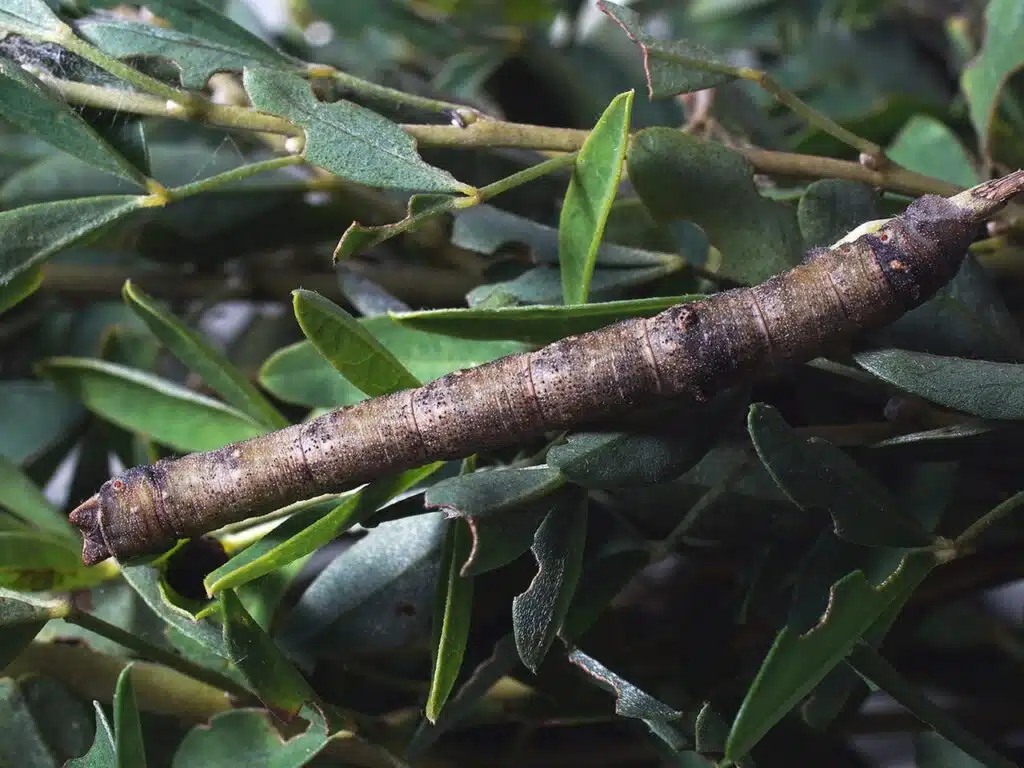
Peppered Moths (Biston betularia) are native to North America and Europe. This is a moth species of a gray color.
Its caterpillars look exactly like sticks. The twig-looking Pepper Moth Caterpillar never has the same color as this depending on its hosts.
Research shows Peppered Moths use their skin to establish the color of the host they need to match.
As a result, the stick-looking Peppered Moth can be black, gray, or green. Caterpillars located on thicker and darker branches have darker colors which may even be black.
Those located on emerging twigs look green, just like the new twig.
Peppered Moth Caterpillars prefer tree hosts to flowers. They use beech and willow for food.
2. Horned Spanworm Moth
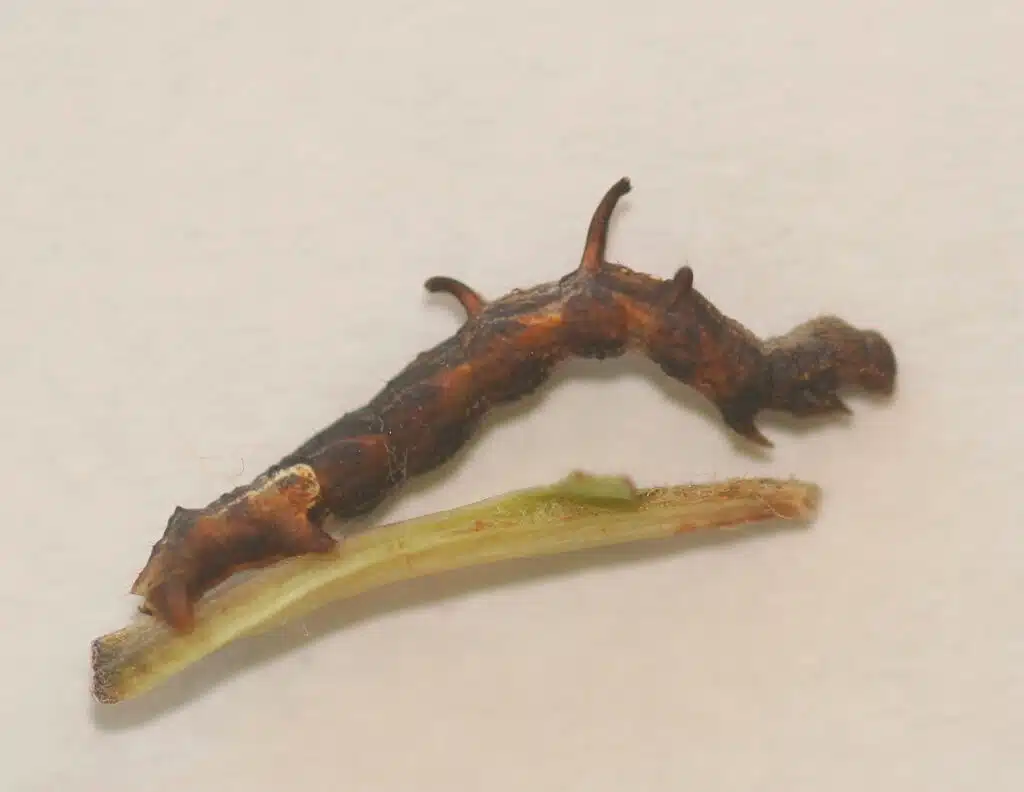
Native to Eastern parts of North America, Horned Spanworm Moths (Nematocampa resistaria) are marked by mimicry techniques through all of their life stages.
If adult moths mimic dead tree leaves, caterpillars mimic sticks.
Pale or faded colors are specific to the stick-looking Horned Spanworm Moth Caterpillar.
This is a species that has brown and dark brown coloring and which has an elongated tubular body that looks like an irregularly-shaped stick.
As with all caterpillars that look like sticks, the appearance of the Horned Spanworm Moth makes keeps it from predation.
This species lives and feeds on trees such as pine, fir, and hemlock.
3. Large Maple Spanworm Moth
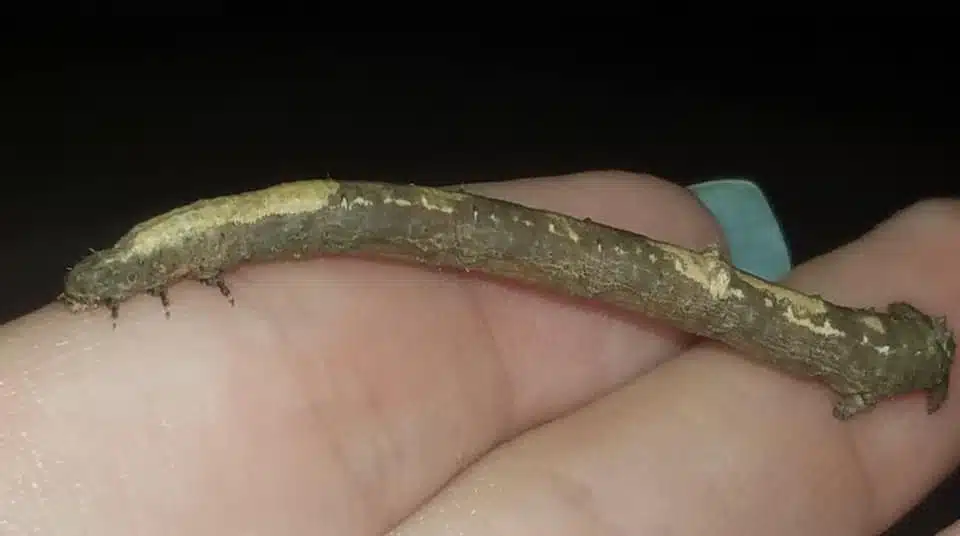
Also native to Eastern parts of North America including the USA and Canada, Large Maple Spanworm Moths (Prochoerodes lineola) are among the species that mimic leaves and sticks as caterpillars.
Adults look similar to dead leaves while caterpillars take on the shape of sticks with brown and gray colors.
These caterpillars have the same brown color on their prolegs as well.
Maple and oak are among the main host trees of the caterpillar. To a lesser extent, Large Maple Spanworm Moths are also spotted on apple, currant, and sweet fern.
The species is most damaging to these host trees in the spring and at the end of the summer.
4. Woolly Gray Moth
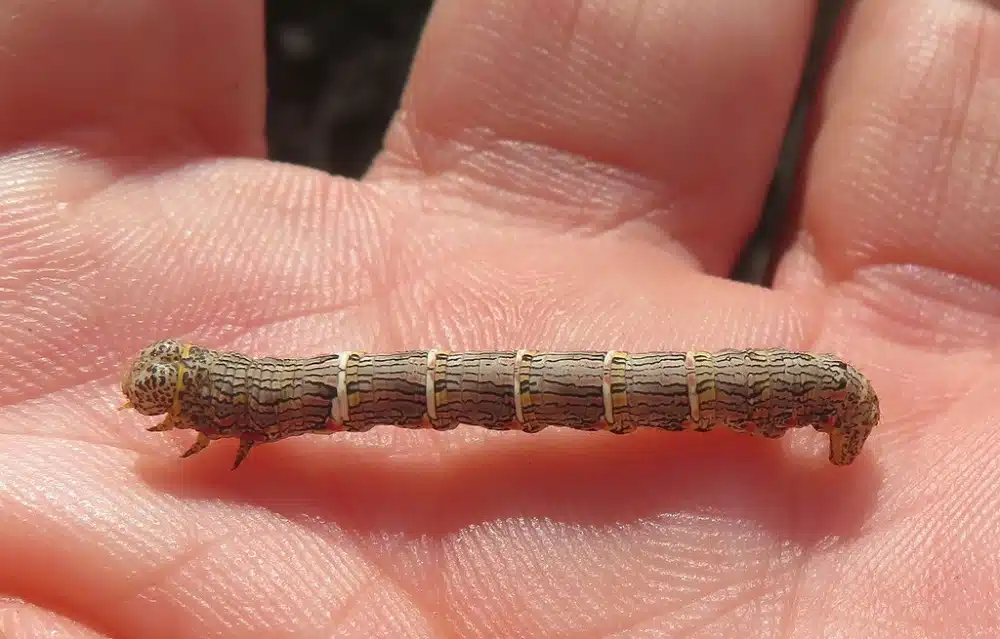
Woodlands and orchards in the Eastern US states are the habitats for the Woolly Gray Moth Caterpillar (Lycia ypsilon).
This is a species mostly known for its colorful stick-like appearance.
While most types of similar stick-looking caterpillars in the East are dark brown and dark gray, Wooly Gray Moth Caterpillars are light brown, white, yellow, and red.
Light brown is the base color of the species with white, yellow, and red colored bands across its body6.
This species feeds on the leaves of various trees. It can feed on the leaves of oaks and fruit trees such as apple and pear specimens.
5. Small Engrailed
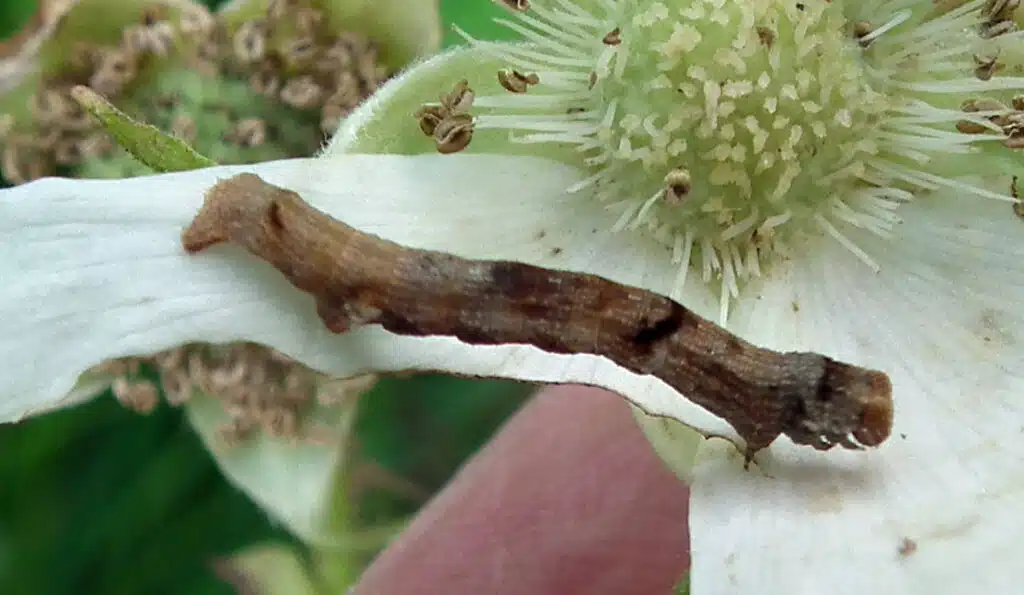
Small Engrailed Caterpillars (Ectropis crepuscularia) are also known for a variety of colors and their stick-like appearance.
Sometimes mimicking tree bark color and other times mimicking the colors of branches they sit on, small Engrailed caterpillars are some of the species that use coloring to keep predators away.
The species is sometimes seen in a gray color but a brown morph has also been spotted in North America.
This caterpillar feeds on the leaves of trees. Fir, maple, and larch are among the most common hosts of the Small Engrailed Caterpillar.
6. Porcelain Gray
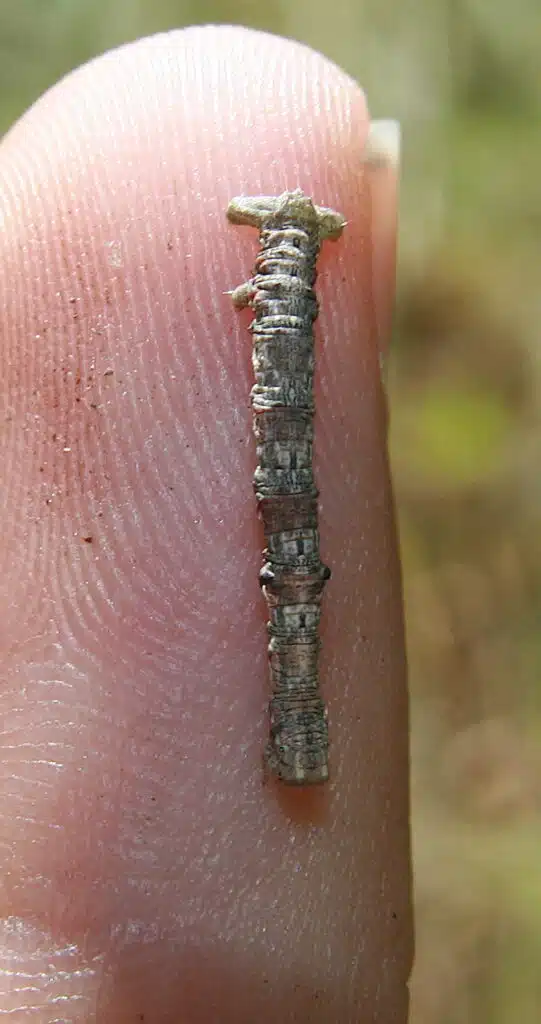
This species (Protoboarmia porcelaria) has a distinct gray color which resembles the coloring of its host trees.
Unlike a few other caterpillars that look like sticks, Porcelain Grays are known for overwintering in a caterpillar stage.
This species overwinters just before its last instar or growth stage to wake again in the spring, as soon as freezing temperatures go away.
A size of up to 25mm for a grown caterpillar is specific to the species.
Adapted to various altitudes, the species feeds on pine, elm, oak, and spruce. Eastern cedar trees are also among its most common hosts.
7. Curved-toothed Geometer Moth
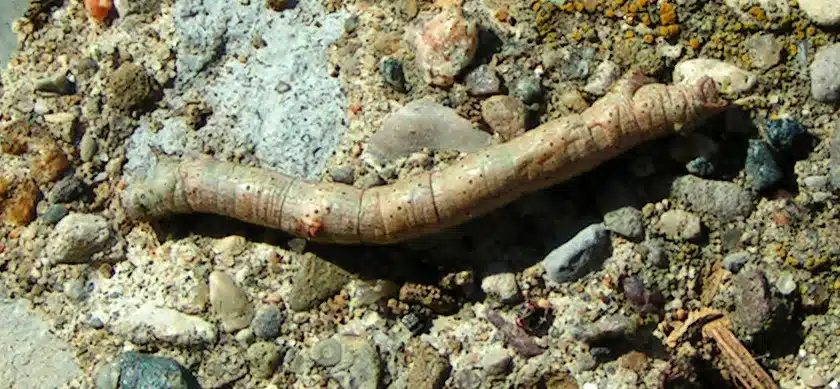
A vast habitat between New York and Florida is a known native range to most Curved-toothed Geometer Moths (Eutrapela clemataria).
This species is known for relying on coloring to either confuse or deter predators.
Both moths and caterpillars rely on this tactic.
The caterpillar has a stick shape and color.
A gray bark-like appearance is specific to this caterpillar. It resembles the tree bark of some of its most common hosts, which are willows and oak trees.
A short body is specific to this species as the Curved-toothed Geometer Moth is also small to medium-sized.
This species of caterpillar feed on tree leaves without major impact or without being considered a pest.
8. Sharp-lined Yellow
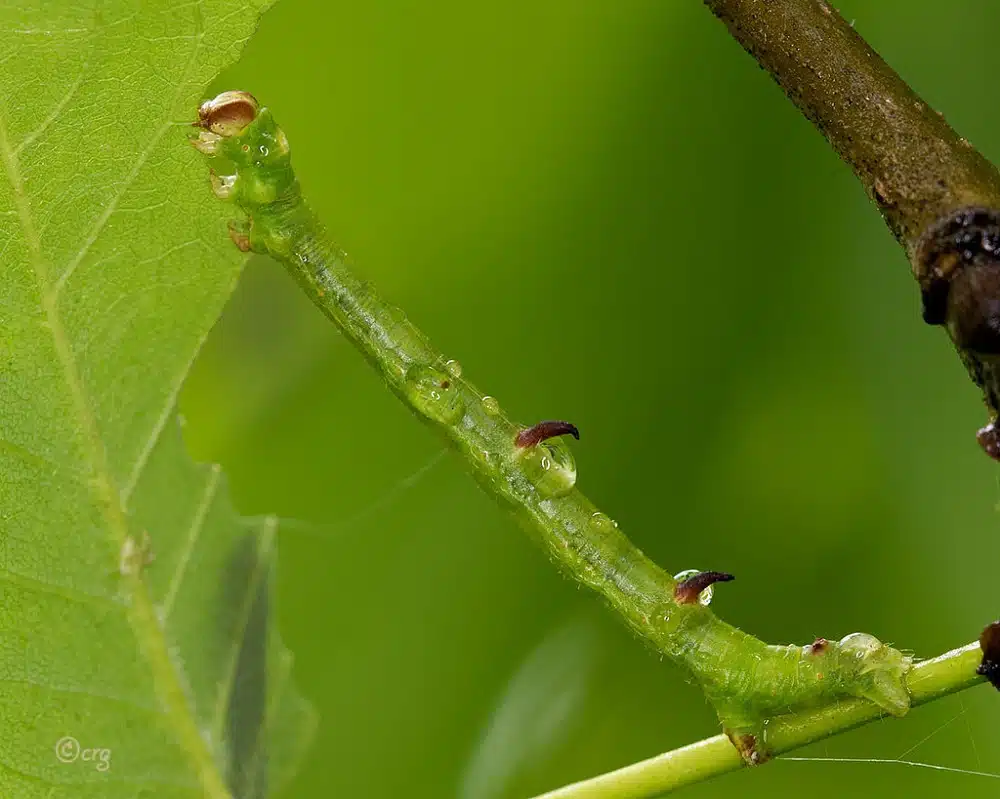
Sharp-lined Yellow moths (Sicya macularia) have a yellow-dominant color.
The caterpillar of this species has a green-dominant color. Red spikes and small yellow sections are sometimes visible on this caterpillar that also looks like a stick.
The green coloring of the species allows this caterpillar to feed on the leaves of trees looking like green newly-merged twigs.
This is a caterpillar that feeds on the green leaves of deciduous trees or trees with falling leaves.
Alder trees are among the most common hosts of the Sharp-lined Yellow Caterpillars.
This species is also seen on various flowering shrubs, unlike other similar caterpillars.
Cinquefoil is one of the shrubs with yellow flowers that also hosts the species.
9. Bent-lined Carpet
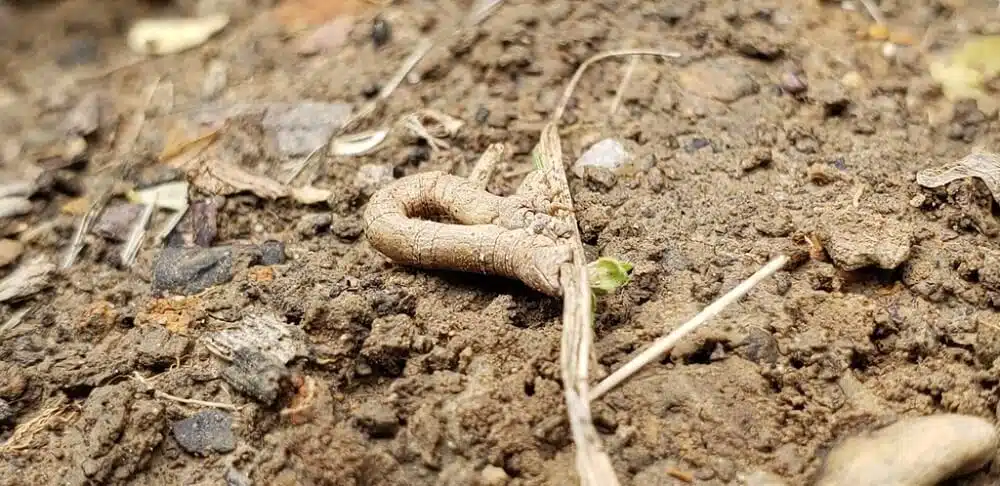
Bent-lined Carpet Caterpillars (Costaconvexa centrostrigaria) are among the few stick-like species that don’t feed on tree leaves.
They prefer shrubs and small plants such as knotgrass.
Brown and dark brown coloring are specific to the Bent-lined Carpet caterpillar.
Unlike other species which have a thin tubular-like body, this caterpillar has a robust body that’s wider and shorter.
It often finds its way to the ground where it blends in with vegetation while feeding on the shrub leaves it can reach.
10. Common Gray
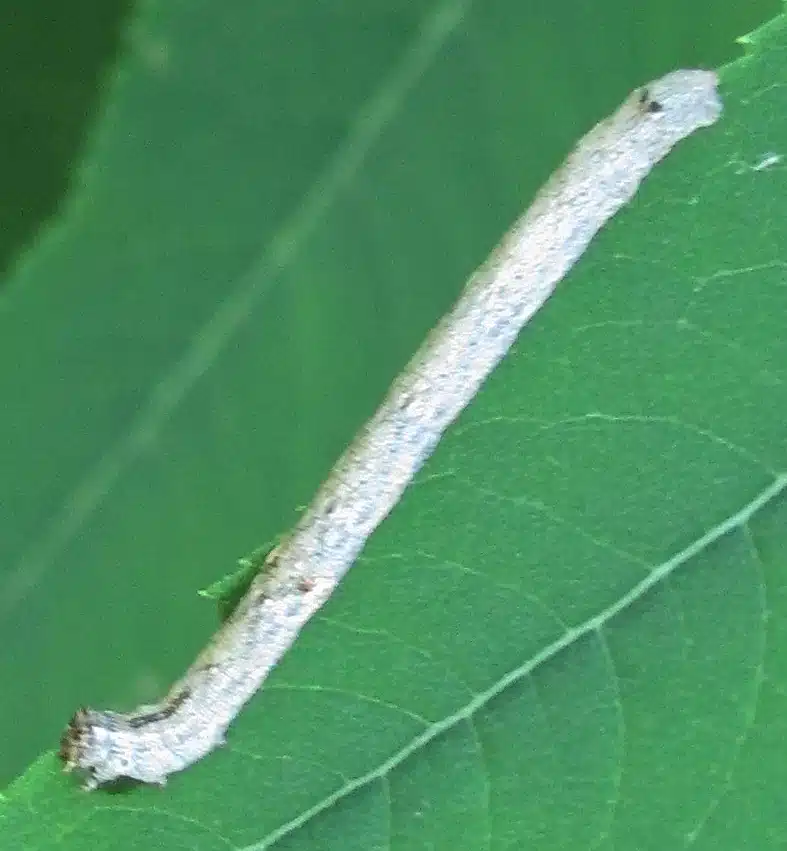
Common Gray Caterpillars (Anavitrinella pampinaria) look like sticks. They have gray, brown, and black coloring.
This is a species with a distinct flat face, which makes it easier to spot when clearing caterpillars from trees.
It’s also one of the species that can cause damage and even defoliation of young trees.
Most of its hosts are deciduous trees but the Common Gray Caterpillar is also a species that feeds on fruit-bearing trees.
Pear and apple trees are some of the most impacted species.
These caterpillars tend to be most damaging in August when they are present in the highest numbers across North America.
11. One-spotted Variant
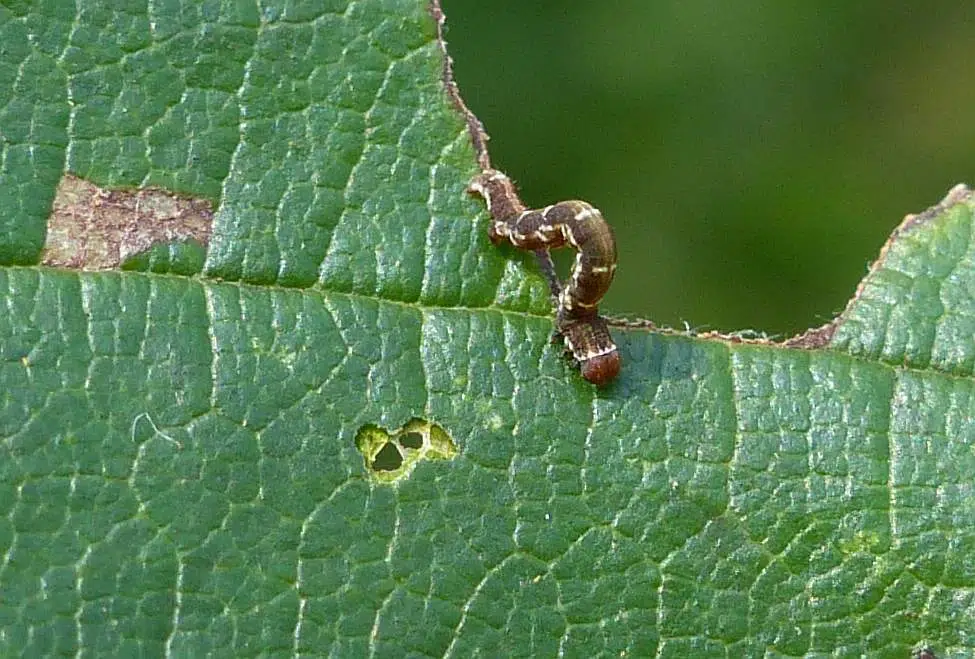
Southeastern US states are the native range of the One-spotted Variant Caterpillar (Hypagyrtis unipunctata).
This species has brown or red-brown coloring and a shape that makes it resemble a stick.
One-spotted Variant Caterpillars feed on trees, shrubs, and fruit trees.
They are often seen on wild plum species but can also feed on rose and maple leaves.
Its impact can be important for some of the most delicate rose species and reduced on trees such as linden.
One-spotted Variant Moths are rarely seen as they are nocturnal.
12. Hemlock Looper Moth
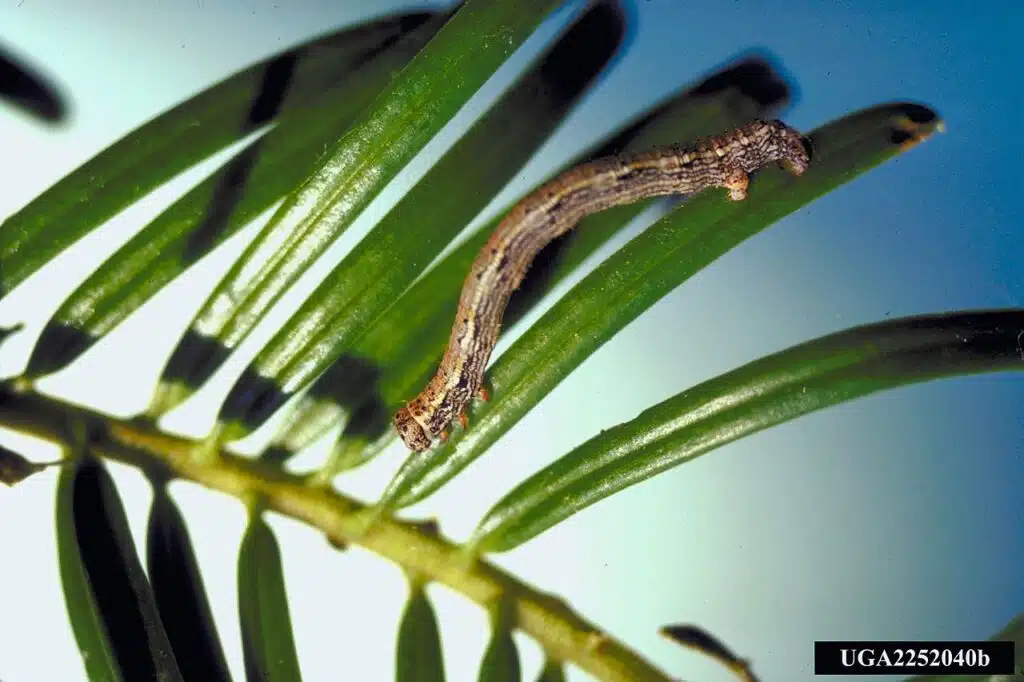
Hemlock Looper Moths Caterpillars (Lambdina fiscellaria) are some of the most damaging species to hemlock.
These caterpillars look like sticks and they come in different colors, according to their growth stage.
Hemlock Looper Moth Caterpillars are among the few bright species as yellow is the dominant color of the species in their first instars.
These caterpillars become brown and black towards their final growth stages.
Apart from hemlock, the caterpillar also feeds on balsam fir and white spruce in the area of The Rocky Mountains.
13. Blackberry Looper Moth
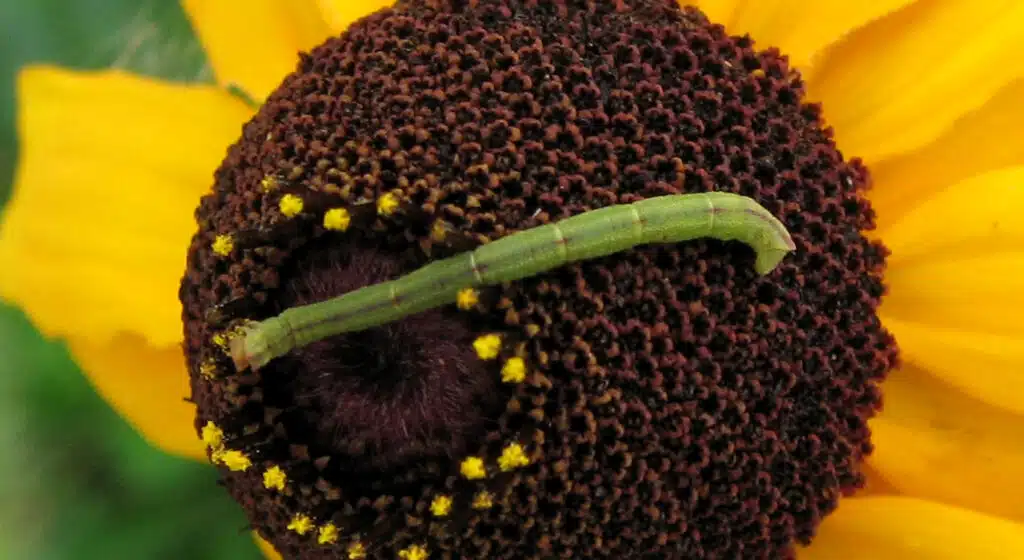
Green is the dominant color of the Blackberry Looper Moth (Chlorochlamys chloroleucaria) and its caterpillar.
This species has a stick-like shape and a green color but it also stands out with its diet.
Unlike other species, The Blackberry Looper Moth is a species that feeds on blackberry fruits. It also eats the leaves of wild roses, asters, and common bonesets.
Seen in 2 generations per year, the Blackberry Looper Moth Caterpillar starts to become wider but still green as it transitions into its pupal stage.
14. Small Phigalia Moth
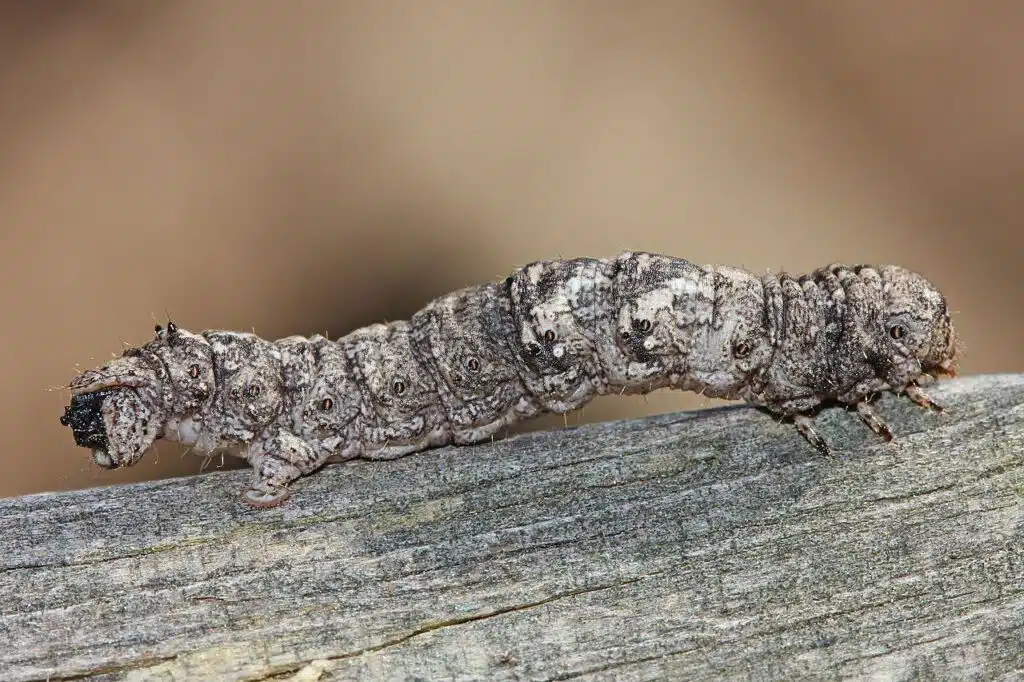
North American woodlands are the common habitat of the species.
It feeds on the leaves of trees and shrubs found in woodlands. Small Phigalia Moth Caterpillars (Phigalia strigataria) feed on trees such as The American Walnut and sugarberry.
It also feeds on blackberry and thornapple fruits.
Gray, green, and brown colors are specific to this caterpillar. A red-brown color is specific to this caterpillar on oak and maple.
A stick shape makes the species look similar to its host.
Small Phigalia Moth Caterpillars are active from January in Southern states such as Texas and from March onwards in other states.